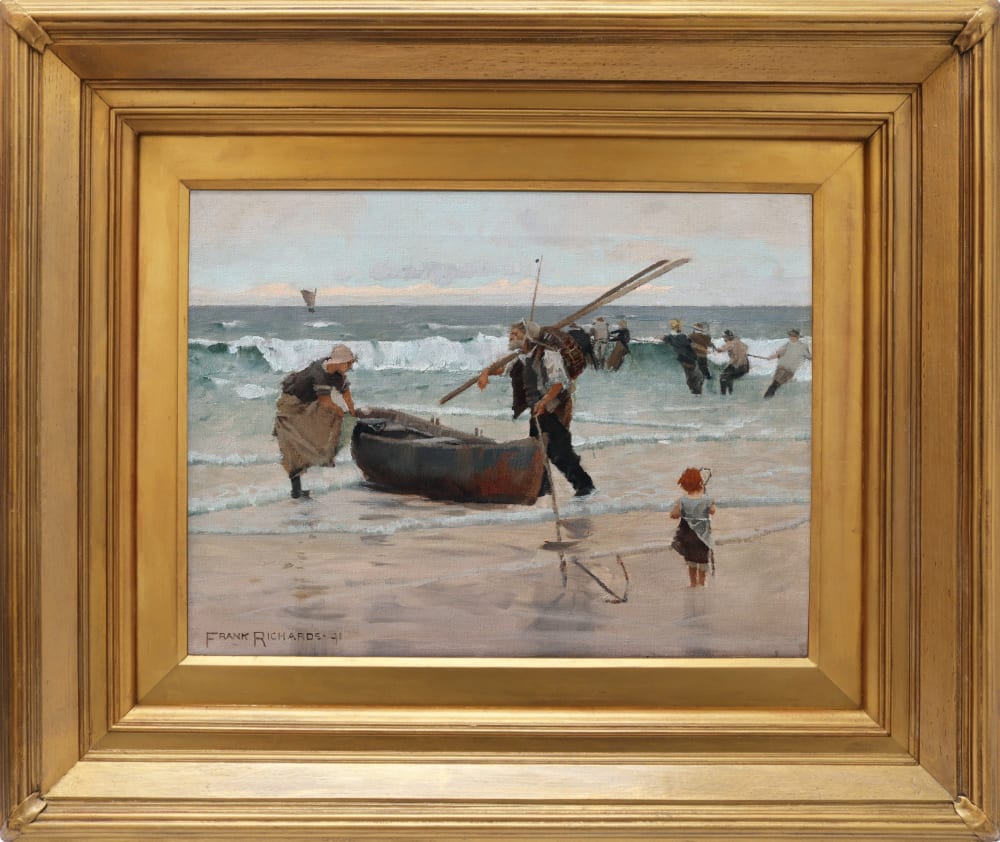
End of the Day, Newlyn by Frank Richards
Frank Richards 1863-1935
Painted a year or two after Frank Richards arrival in Newlyn. A bold example of a Newlyn en plein-air painting and the deployment of Richard’s signature square brush technique. In the foreground a fisherman wearing a sou’wester, with oars and withy pot slung over his shoulder, and a young woman in a heavy ‘towser’ apron, are off-loading a rowing boat; a little girl, possibly their daughter, looking on, a child’s fishing net in hand. Rowing boats were typically used for potting (or ‘crabbing’); setting and pulling up the pots whilst the boat lay alongside. The iron bar in the foreground was employed in the final heave, to get the pots onboard. Off Newlyn the crabbers caught lobster, crab and crayfish. The sand is reflective and wet suggesting a running tide - ideally ebbing to beach the boats. To the right of the composition, a row of oil skin clad fishermen, amidst the breaking waves, take the strain on a rope as they draw another boat ashore. So, for the contemporary audience the painting speaks of the tough life of the Cornish fisherman but perhaps more significantly, of a community and a family quite literally pulling together. The brushwork is spontaneous and brisk suggesting that it was painted, in large part, en plein-air. The subject, composition and palette are all reminiscent of Stanhope Forbes seminal work, Fish Sale on a Cornish Beach exhibited to much critical acclaim at the Royal Academy in 1885 (now in the Plymouth Art Gallery and Museum); and a painting of which Frank Richards would have been aware.






